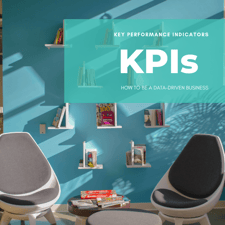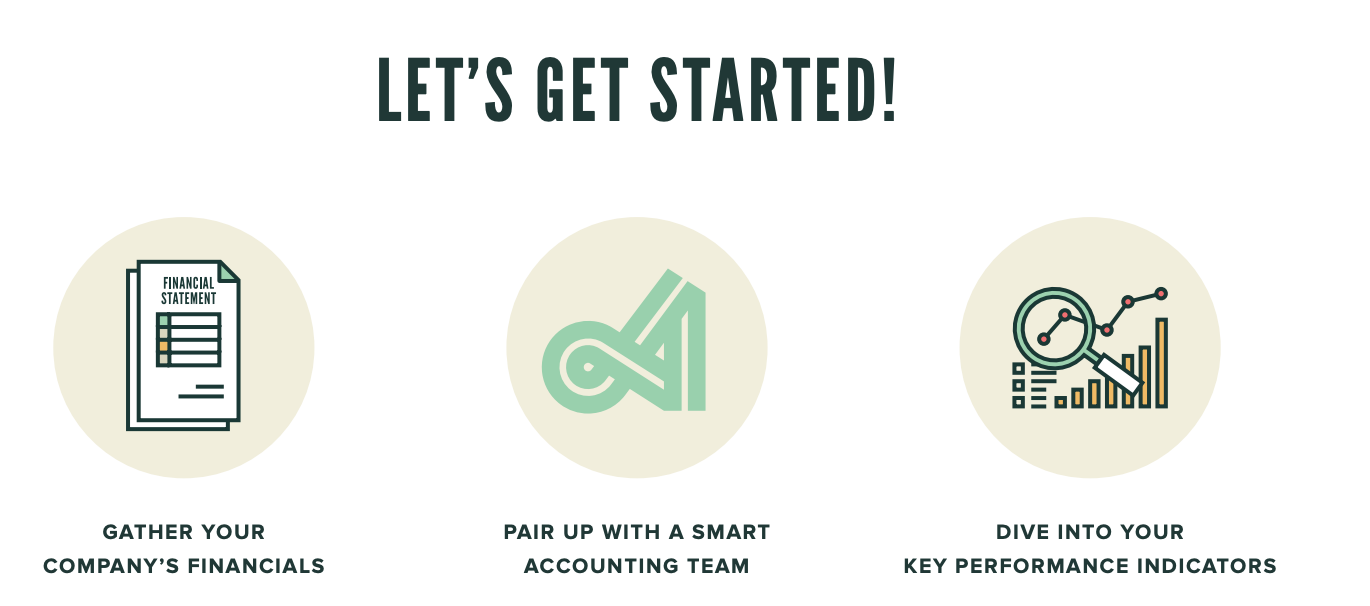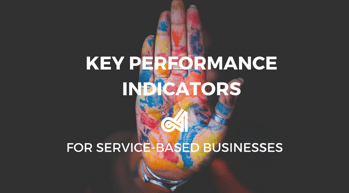
How Taking a Good Look At The KPIs Can Create a Roadmap to Success

 Learn How to be a Data Driven Business.
Learn How to be a Data Driven Business.Click the thumbnail graphic to download your full guide.
In this guide you will learn:
As accountants, we’re used to thinking in terms of quantifying successes rather than qualifying them. We like numbers, that’s why we got into this gig. But business owners get into business because they have great ideas, game-changing products or much-needed expertise to offer. Business owners are driven by day-to-day challenges, the meeting they’re scheduling next week, and the new client they land next month. If all that’s going well, then we can understand why that feels good. Money’s coming in, bills are getting paid, and everyone ends the day happy.
But companies can go a bit too long coasting on entrepreneurial vibes, full calendars and good moods rather than taking a practical approach to financial health and growth. Getting caught up in the business minutiae of presentations or pitch emails distracts from the foundation of your business.
According to Bloomberg, 8 out of 10 entrepreneurs who start businesses fail within the first 18 months. And the U.S. Bureau of Labor Statistics notes, “About half of all new establishments survive five years or more and about one-third survive 10 years or more. As one would expect, the probability of survival increases with a firm’s age. Survival rates have changed little over time.”

For many managers, the idea that building and running a business for some time without interruption means they’ve cleared the important hurdles and by default consider themselves successful. Yet having a well established business isn’t a guarantee of success, despite the reassuring charts that equate age with safety. Unfortunately, as accountants, we know that maturity and experience can’t safeguard against flying blind. While a business may be growing, its owners and managers may lack the tools they need to keep it progressing through changing markets or shifts in the industry. Though a business owner shouldn’t be expected to translate spreadsheets to a perfect prediction of the future, they should, however, have access to all of the information. That’s where your accountants come in. Access to your company’s financials is essential; understanding what they represent becomes easier with the help of a smart accounting team.
Undertaking an inventory of key performance indicators (KPIs) is an important step in truly assessing your company’s financial strength and sustainability. Moreover, those metrics become a roadmap for growth, help to define your goals, and can illuminate better strategies to reach the next levels of growth. While some of these percentages may seem familiar at first glance, other KPIs may benefit from your accounting team’s insight. Discovering less-than-healthy stats isn’t a death knell; a proper evaluation should actually help you to develop ways to addresses weaknesses. Paired with your accounting team, you can leverage the data to make strategic decisions to strengthen your company in meaningful way. First we’ll dive into the financial metrics that all companies should be aware of, and then we’ll split into service-based businesses and product-based businesses for more precise advice.

Many businesses set benchmarks for expense ratios and budgets—making sure they’re within reasonable limits, identifying costs when they aren’t. These KPIs offer a starting point for gauging your company’s operational health. If expenses are too high and that trend isn’t subsiding, it should signal a serious reconsideration of strategy. Ignoring something at this step could mean egregious problems down the line. If your company can’t navigate reductions in sales or operates with poor ratios already, then this symptom deserves your attention. A company shouldn’t wait until it has large debts or insurmountable cash shortages to realize signs of ill health. There’s no escaping problems at this level.

 KPIs For the Service Industry
KPIs For the Service IndustryTaken together, these particular KPIs represent the sum of success for service-based businesses. Is each employee or department within a desired profit margin? Is one department significantly under-performing? Can you afford to hire another employee? Are labor costs too high? By subdividing important data, you’re able to process each piece of the puzzle that contributes to long-term success. For service-based companies, the impetus is to build for efficiency and find apt comparisons to similar businesses. While there’s no warehouse of goods taking up space and capital, there are employees who produce valuable albeit intangible work product. Assessing costs and revenue for service-based companies may seem easier with fewer moving parts, but an accounting team can help an owner shine some light on metrics that can widen the gap between cost and profit.
For businesses that are product-based, there are particular data points that can reflect the company’s health. Are your costs and revenue at odds? Is your brick and mortar shop outperforming your web orders? Is inventory shipping efficiently? By double-checking these KPIs, product-based businesses should have a better idea of where they stand and what to tweak for optimal outcomes. Companies that are product-based may have more predictable supply and demand time periods, but a single error can throw a wrench into financials months down the road. Keeping a close eye on costs and variables can make recovering from mistakes bearable, but more importantly, an engaged owner and accounting team can pinpoint slices of the company’s financials that are worth a second look for growth.
 As your company transitions from a start-up and takes each next step, additional complexities will be layered into your business—whether it’s more staff, customers, or locations. To continue to succeed, your company will need to identify the KPIs that indicate strengths and weaknesses. But to be clear, in any stage of business, leaders should expect this information from accountants. Access to data allows immediate insight on whether your company sinks or swims next quarter. If you have trouble understanding your company’s KPIs or what the numbers might be able to tell you, accounting experts can and should guide you.
As your company transitions from a start-up and takes each next step, additional complexities will be layered into your business—whether it’s more staff, customers, or locations. To continue to succeed, your company will need to identify the KPIs that indicate strengths and weaknesses. But to be clear, in any stage of business, leaders should expect this information from accountants. Access to data allows immediate insight on whether your company sinks or swims next quarter. If you have trouble understanding your company’s KPIs or what the numbers might be able to tell you, accounting experts can and should guide you.
Accountfully has worked with companies of all types to identify pain points and thoughtfully re-orient companies on better paths to success. Giving business owners the resources to track existing KPIs is critical to the success of businesses large and small—and the economic eco-system surrounding them. With data in hand, you can make decisions on attainable objectives that represent success and sustainable growth.